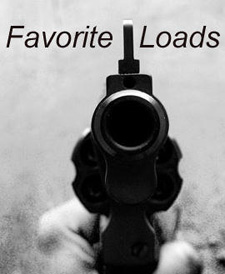

 The Accurate Reloading Forums
The Accurate Reloading Forums  THE ACCURATE RELOADING.COM FORUMS
THE ACCURATE RELOADING.COM FORUMS  Guns, Politics, Gunsmithing & Reloading
Guns, Politics, Gunsmithing & Reloading  Your Favorite Loads - Share Them With Us
Your Favorite Loads - Share Them With Us  30/30 with 220 grain Round Nose
30/30 with 220 grain Round NoseGo  | New  | Find  | Notify  | Tools  | Reply  |  |
Moderator |
Interesting thread, I was suprised to see a thread in this forum with so many responses Not having a 30/30, I can't comment on what a mdl 94 can do with 220 gr bullets. However, I do have a .308 w/ 20" barrel, and have tried 220 gr Sierras w/ RL 15, H 4350 and VV N 550. All the powders maxed out around 2150 fps staying within published parameters. The only time I've pushed that .308 was when using an article in Handloader that suggested using VV N-550 for loads with 165 gr bullets. I managed to hit 2850 fps with a 165 gr Rem bullet, but then I noticed loose primer pockets. I'm sure I could have backed off to 2800 fps and kept the primer pockets in tact, but then I realized that I really didn't need to make my .308 into a 30-06. It really comes down to what factor of safety one wants in their handloads. Some folks figure they'll be content with standard levels of performance from their gun, and if they need more, they'll get a bigger gun. Others just have to push things, and will claim look how much more performance you can gain by experimenting. There is no magic in balistics, or secret formulas. Velocity in a given caliber for a given weight of bullet is a simple area under the curve issue. A case of a given capacity will have to achieve a certain level of pressure over a certain time to produce a certain velocity. The only way to gain more velocity is to run at higher peak pressures, or re-chamber for a larger capacity case. | |||
|
| one of us |
seafire/ B17G, Glad to see that you are going to try slower burning W760 which will reduce pressure with a capacity load. You'll loose around 100-150 f.p.s. but no game animal could tell the difference and ..... I'll sleep better at night. Paul, Thank you for your input. w30wcf | |||
|
| one of us |
Well, it's been a few years. (Where did the time go?!) UPDATE I had a ballistics lab pressure test one of my .30-30 heavy cast bullet loads. Here is the data: bullet weight: 205 gr. seating depth: .60" ctg. o.a.l. 2.56" powder: H414 lot: 1071102294 charge: 35.0 grs. primer: WLR lot: PML123G brass: Winchester 10 rounds fired average pressure: 35,060 CUP velocity 24" barrel: 2,033 f.p.s. That is only about 3,000 CUP below SAMMI maximum. Now if a 220 gr. bullet was substituted, that would be an increase in bullet weight of 7.3%. The question is then what would the pressure increase be? Hodgdon data using H414 powder in the .30-30 is: 150 gr. bullet 37.0 grs. 30,000 CUP 170 gr. bullet 37.0 grs. 37,400 CUP By interpolation ..... a 13.3% increase in bullet weight = a 7,400 CUP increase .... then a 7.3% increase in bullet weight (220/205)= 4,062 CUP increase (7,400/13.3 x 7.3)= 39,122 CUP (35,060 + 4,062) if a 220 gr. bullet was substituted for the 205 gr. bullet. As we know, there are other factors to consider with the 150 gr. & 170 gr. bullets used in the Hodgdon data. The bearing surface length, bullet hardness and seating depth could skew the data somewhat. However, I feel that an estimated 4,000 CUP increase for the 220 gr. bullet is certainly in range. Different lots of powder and different powder types would give different results but at least we have established a baseline. Sincerely, w30wcf aka Jack Christian SASS 11993 I can do all things through Christ who strengthens me. Philippians 4:13 aka John Kort NRA Life Member .22WCF, .30WCF, .44WCF Cartridge Historian | |||
|
| Powered by Social Strata | Page 1 2 3 4 |
| Please Wait. Your request is being processed... |
|

Visit our on-line store for AR Memorabilia

